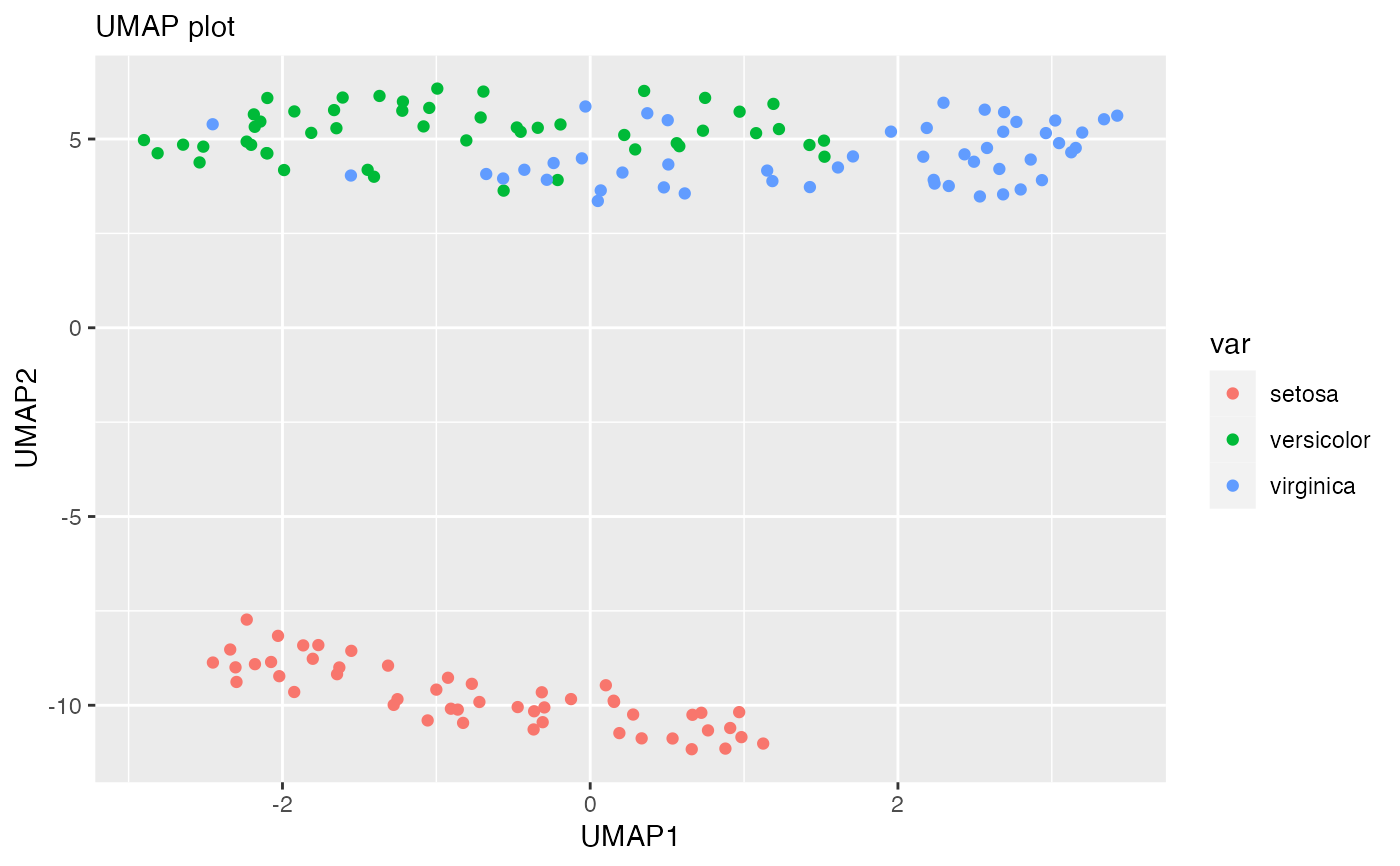UMAPgp: Uniform Manifold Approximation and Projection Global Preservation
umapgp.RdComputes Uniform Manifold Approximation and Projection (UMAP) while preserving global structures.
Arguments
- var
A variable of interest from the dataset; it should be categorical.
- data
The dataset to be used; it should be a dataframe with no rownames.
Value
object of class umap, containing atleast a component with an embedding and a component with configuration settings
Details
Create, modify, and delete columns `mutate()` adds new variables and preserves the existing ones `rename()` renames columns Subset columns using their names and types `select()` picks variable basedon their names `where()`selection helper that selects the variables for which a function returns TRUE Assign row names `column_to_rownames()` assigns row names to the dataframe Scaling columns of a matrix `scale()`centers and scales the columns of a numeric matrix Mutating joins `inner_join()`An inner join is a merge operation between two data frame which seeks to only return the records which matched between the two data frames Data visualization `ggplot()`used to declare the input data frame for a graphic and to specify the set of plot aesthetics intended to be common throughout all subsequent layers unless specifically overridden
